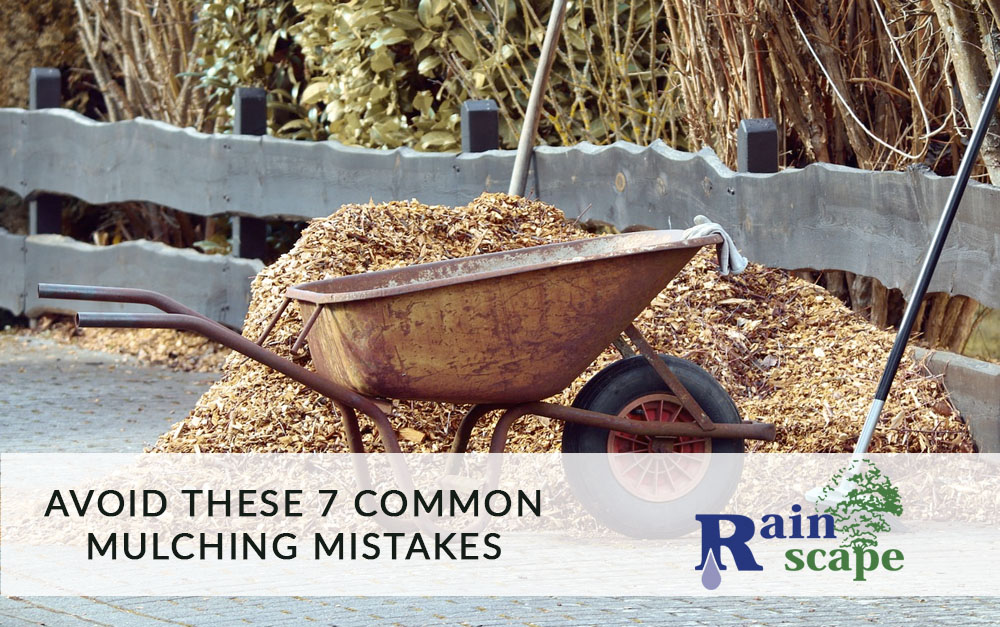Mulching is known for its many benefits. Plants are happier and healthier, and their roots are cooler in the heat or the summer. Mulch helps to control weeds and hold moisture in the soil. With all of mulches benefits, can you believe that there are simple mistakes you can make that you can easily avoid when it comes to mulching?
-
Beware of dyes
If you notice that your mulch bag contains sprayed-on colorants, take it back! These dyes are toxic to pets and kids and can leach into soil and destroy beneficial microbes. Instead look for composted leaf mulch or leave your leaves! Nature knows what it is doing and provides natural, renewable resources. It looks more natural and provides habitat for butterflies and other beneficial insects as well.
-
Don’t make piles around your plants
Piling mulch right up against plants, shrubs and perennials is not a good idea. You want to leave at least a couple of inches of space around the stems. Tree trunks prefer not to have mounds of mulch around their trunks as well. These mounds encourage insects to bore through the now too damp root collar of the tree and cause rot. Beware of weakening your plants and trees.
-
Don’t create a termite hallway into your house
If you allow your mulch too close to your house, you’re setting yourself up for an extermination appointment. Mulch should be kept at least 6 inches from any kind of wooden structures. If your wall is concrete, it’s ok, but wood is a no-no. The termites and other pests will use this damp path to get into your home and cause expensive damage.
-
Mulch and soil don’t mix
Mulch should lie on the surface. If you mix your mulch into your soil, you’re setting yourself up for difficulties in digging and weeding. The mixture damages the nutrient balance. Mulch, compost and soil are all different things that are useful for their own ways. Mulch shouldn’t replace soil, because as it decays it steals the nitrogen that you want your plants to have to grow!
-
Fresher isn’t always better
You may think that fresh is best, but when it comes to mulch materials such as brush, manure or hay you should let it sit out for a few months. These often contain herbicide residues and weed seeds. You should give the weed sprouts a chance to die and the residue time to leach out.
-
Beware of creepy plants
Some plants just don’t know their boundaries. Creeping stems and turf grasses such as Bermuda are invasive, and they will grow right underneath your mulch. It’s best not to spread mulch on or near these plants and create an edging so you can see and remove runners!
-
Don’t waste decorative mulch on veggies
Vegetable gardens are plenty happy with an inexpensive compost instead of wasting your expensive woody mulch. If you use mulch, you’ll have to move it aside to weed and then put it back. Who needs more expense and more work?
Set yourself up for success by removing weeds before mulching and avoiding these 7 common mistakes. If you have any questions regarding the best mulch for your landscape, we would be happy to help!

